“Never Has Man Believed in Me As Thou Hast”
The Book of Ether
Click here to listen to Jared Anderson’s podcast that goes over this lesson.
The abridgment of the Jaredite record is promised in Mosiah 28:17-19. In 1920, a headnote was added that read: “The record of the Jaredites, taken from the twenty-four plates found by the people of the Limhi in the days of King Mosiah.” (Grant Hardy, The Book of Mormon: A Reader’s Edition, pg. 579, note a1)
“It is easy to see the differences between Mormon’s and Moroni’s approaches to history in the book of Ether, Moroni’s abridgment of the Jaredite record. Where Mormon tended to provide well-integrated, carefully structured accounts with relatively developed characters and brief, sporadic editorial comments, Moroni does just the opposite. Aside from the first and last major figures, the brother of Jared and Coriantumr, his treatment of the twenty-seven intervening kings reads like a lightly edited chronicle, checking off generations one by one in a much more truncated form than we see even in First and Second Kings (or, less charitably, with the sort of dry synopsis that might characterize a middle-school book report)…The book of Ether has a clear structure – the genealogical list in the first chapter provides the framework for the chronicle of Jaredite kings in chapters 6-11 – but Moroni does not appear to be reworking his source material to any appreciable extent; in contrast to his father’s abridging, there is not much artistry here. Perhaps he simply did not have much to work with. The twenty-four plates found by the people of Limhi may have consisted of little more than terse annals.
“Because his editing is more awkward, with much less literary shaping, Moroni maintains a more pervasive narrator presence. He has to jump in more frequently, and at greater length, to make his points clear. In the first edition of 1830 there were six chapters in the book of Ether (now subdivided into fifteen chapters), and of these, five began with some variations of “And now I Moroni, proceed to give an account of [the Jaredites]…” (Ether 1:1; 5:1; 6:1; 9:1; 13:1). The remaining chapter (originally numbered as V, but now Ether 12) consist almost entirely of Moroni’s commentary. In all, the phrase “I, Moroni” appears eleven times in the book of Ether. By Comparison, over the course of Mormon’s much lengthier abridgment of earlier records, “I, Mormon” occurs only three times (3 Nephi 26:12; 28:24; 4 Nephi 1:23). Moroni employs Mormon’s favorite commentarial device, “thus we see,” only once (Ether 14:25), preferring to alternate chronicle-like passages of historical synopsis with long editorial interruptions, often aimed directly at his Gentile readers (see Ether 2:9-12; 4:4-19; 8:20-26; 12:6-41)
“…Mormon exhibited a keen interest in evidence and argumentation, especially in demonstrating when prophetic warnings were fulfilled. Moroni, by contrast, appears to have given up on the idea that his readers could be persuaded through historical evidence. Although he certainly believes that God’s promises will come to pass (book of Mormon 8:22, 33), he realizes that many of his readers will “deny the revelations of God, and say that they are done away, that there are no revelations, nor prophecies” (book of Mormon 9:7). Consequently, he does not bother to note the sort of prophecy /fulfillment connections that characterized Mormon’s history. For instance, Jaredite prophets warned that unless the people repented they would be destroyed, their bones would be heaped upon the earth, and God would bring another people to inherit the land (Ether 11:6, 21). Moroni knows that these predictions came true (see Mosiah 8:8; Ether 14:21) but he never explicitly makes the point.
“…Instead Moroni seems to believe that only God can convince skeptical latter-day readers of the truth of his account. In a verse beloved by Latter-day Saints missionaries, he urges that “when ye shall receive these things, I would exhort you that ye would ask God, the Eternal Father, in the name of Christ, if these things are not true…he will manifest the truth of it unto you , by the power of the Holy Ghost” (Moroni 10:4). In book of Mormon 9:25 (cf. v. 21) We first meet Moroni, he assured his readers that God wold confirm all his words “whosoever shall believe in [“Jesus”] name, doubting nothing”….Moroni does not think that he can prove the truth of his account; rather, he appeals to his readers to exercise faith, trusting that this will lead the receptive to a personal encounter with god’s affirming Spirit.
“…Since Moroni believes that spiritual knowledge depends more on prayer and revelation than on historical research, we might expect him to take a different approach to the task of writing history than his father, and that is exactly what we find….Because [Moroni] edits so differently, he subtly undercuts the significance of his father’s literary achievement even as he celebrates it. How important are facts in the end? Does the careful balancing of historical details and literary presentation really matter when all we truly need is the witness of the Spirit? Or perhaps Moroni’s attitude reflects not a disagreement over basic principles so much as a frustration. In this interpretation, Moroni is not dismissing his father’s efforts or sensibilities, but he despairs – rightly, as it turns out – that they will not gain Mormon the respect he deserves. Instead, prideful future readers will mock, and there is really no compelling retort (especially without any culturally specific New Word archaeological evidence to support Mormon’s scrupulous historiographical details) (Grant Hardy, Understanding the Book of Mormon: A Reader’s Guide, pg. 222-225)
An Abridgment of the Twenty-four Plates: Ether 1:1-6a
1:1 Even though it was Mormon that promised that an account of the Jaredites would be given (see Mosia 28:17-19), the responsibility ultimately fell on his son Moroni.
1:2 “…which were found by the people of Limhi (son of wicked King Noah)…” See Mosiah 8:7-9; 28:10-19
1:4 “…upon the plates…” That is, the twenty-four plates of pure gold that were found by the people of King Limhi (See Mosiah 8:9) and translated by King Mosiah2 (See Mosiah 28:11). Or could Moroni be speaking of King Moisah2‘s translation of the twenty-four plates? Moroni never tells us.
1:5 “…I give not a full account…”
“Moroni feels like he has to intervene regularly as the editor from the very beginning. But such an admission (as seen in Ether 1:5) is a virtual invitation for readers to ask, ‘What is missing and why?'” (Hardy, A Reader’s Guide, pg. 228).
The Genealogy of Ether: Ether 1:6b-33
The book of Ether offers one more striking example of narrative complexity: the genealogy in the first chapter provides the framework for the chronicle of Jaredite kings. That is, Joseph dictated a long string of twenty-seven unusual names and then several pages later repeated the list, but this time with stories attached to each name. If he were composing as he went along, this would be quite a feat of memory, especially since the names in the narrative portion are in reverse order from the way they appear in the genealogical list” (Hardy, A Reader’s Edition, pg. 318, note 5)
1:11 “Shiblon” is later referred to as Shiblom. See Ether 11:4
1:33 “…time the Lord confounded the language of the people…” See Genesis 11:1-9
Jared1 and His Brother Appeal to the Lord: Ether 1:34-43
Why in the text that we presently have, is the brother of Jared’s name never given? Was it Moroni’s editorial decision? Was it not available in the extant text with which Moroni was working? With which record was Moroni working? Was it King Mosiah2‘s translation of the twenty-four golden plates or was it the original Jaredite source-material? If Moroni was working with King Mosiah2‘s translation of the twenty-four golden plates, had King Mosiah2 edited the name out? Does our Book of Mormon text give us any clues to a plausible answer?
“While residing in Kirtland Elder Reynolds Cahoon had a son born to him. One day when President Joseph Smith was passing his door, he called the Prophet in and asked him to bless and name the baby. Joseph did so and gave the boy the name of Mahonri Moriancumer. When he had finished the blessing he laid the child on the bed, and turning to Elder Cahoon he said, ‘The name I have given your son is the name of the brother of Jared; the Lord has just shown [or revealed] it to me.’ Elder William F. Cahoon … heard the Prophet make this statement to his father; and this was the first time the name of the brother of Jared was known in the Church in this dispensation” (George Reynolds, “The Jaredites,” Juvenile Instructor, 1 May 1892, 282).
The Jaredites Begin Their Travels: Ether 2:1-8
2:1 “Nimrod” See Genesis 10:8-9
2:3 “honey bee”
The apis mellifera species was not found in the New World until it was imported from about the seventeenth century AD onward. The indigenous American bee is the melipona (a stingless bee). It produces only about one kilogram of honey per year (compared with apis mellifera, which can produce fifty kilograms). Nevertheless, pre-Columbian Americans did indeed have knowledge of beekeeping and made the most of the melipona. Cortés wrote to the king of Spain in 1519 about the extent of beekeeping among the Indians of Cozumel (Mexico):
“The only trade which the Indians have is in bee hives, and our Procurators will bear to Your Highness specimens of the honey and the bee hives that you may commend them to be examined”
The earliest archaeological evidence for American apiculture (bee-keeping) comes from the Late Preclassic Maya period (ca. 300 BC–AD 300). Modern peasant apiculture in the Yucatán is reminiscent of Egyptian beekeeping: hives (often hollowed-out logs) are stacked vertically on a rack. The lost-wax technique was known in the New World, and the ancient Maya pantheon included a bee god called Ah Mucan Cab ( Ronan James Head, A Brief Survey of Ancient Near Eastern Beekeeping, Maxwell Institute)
Moroni2 on the Land of Promise: Ether 2:9-13
2:9 “…shall be swept off when the fullness of his wrath shall come upon them…when they are ripened in iniquity….fullness of iniquity…” The message here appears a bit cryptic in that we don’t have a clear idea of what it means to be “ripened in iniquity” or when one has arrived at having a “fullness of iniquity.”
A Chastening in the Wilderness: Ether 2:14-16a
2:13 “…for the space of four years…” This makes me wonder if they brought over the honey bees with them to the New World, or just carried them until they got to the seashore?
Air and Light for the Barges: Ether 2:16b-23
2:20 “…though shalt make a hole in the top…” Does this make any sense to anyone?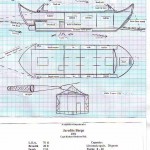
2:23 “…ye cannot have windows…” I am having difficulty believing that during this time in history glass windows existed. What other possible meaning or interpretation can there be for “window”? Any opening from an inside enclosure to the outside?
Sixteen Stones: Ether 3:1-5
3:2 “…we must call upon thee…” See Ether 2:14
The Brother of Jared1 Sees the Lord: Ether 3:6-28
3:6 “…touched the stones one by one…”
“It’s not often that God’s finger reaches through the cosmic ether into a recognizable dimension, beckoned, perhaps, by prayer to light a stone or two―a handful of lithic lamps designed to illuminate a crossing of “great waters in darkness”. Unlike the brother of Jared, we are more often than not required to operate based on stirrings of the veil, rather than rents and tears in the fabric of space and time through which divine parts pass. The universe shimmers as a shroud before the face of God, and we find ourselves kneeling by light rather than by lifted finger….. “
These are the opening sentences to an essay that Kylan Rice wrote for us earlier this year. Click here to read more of his amazing essay.
3:12 “…thou art a God of truth, and canst not lie.” Why can God not lie? Because truth is a necessary attribute of God.
3:13 “…because thou knowest these things…” To what things is the pre-mortal Jesus referring?
3:14 “…Behold, I am Jesus Christ. I am the Father and the Son…they who shall believe on my name…they shall become my sons and my daughters…” I believe this explains how Jesus is the Father.
The idea that the Jaredites did not know about Jesus will come as a surprise to most Latter-day Saints. At first glance, the Jaredite story does not seem that different from what we have seen elsewhere in the Book of Mormon; Christ is mentioned regularly and reverently. Yet if one were to go through the book of Ether with a red pencil and differentiate Moroni’s direct narrator’s comments from his paraphrase of the twenty -four plates, it would soon become obvious that, with a single exception, specific references to Jesus Christ appear only in Moroni’s editorial remarks….there is no discussion of redemption through Jesus. The impression we have that the book of Ether harmonizes with the Christocentric tone of the rest of the Book of Mormon is due almost entirely to Morni’s editorial skill ( or perhaps his adept camouflaging).
The obvious exception to all of this is the brother of Jared’s remarkable and very personal encounter with Jesus, as reported in Ether 3. There the Lord appears to his prophet to emphatically declare his identity…But as the vision closes, the Lord instructs the brother of Jared to write an account of the experience, seal it up, and not speak of it again Ether 3:21-22). The remaining of the book of Ether reads as if that is precisely what happened. The language of Christian doctrine vanishes and no specific mention is made of Jesus for the next twenty-eight generations of Jaredite history, until the very end – in marked contrast to the Nephite record, which rarely goes for more than a few verses without “talking of Christ, rejoicing in Christ, preaching of Christ, or prophesying of Christ,” to paraphrase 2 Nephi 25:26.
…The challenge for Moroni is to Christianize Ether’s book, making it appear more theologically consistent with his father’s history than it actually was. He does this by working in additional eighteen references to Christ’s name into his comments on the Jaredite record. His methodology can be easily tracked if we line up the explicit references to Christ with Moroni’s six direct comment sections, each of which either begins with some variation of “And now, I Moroni…” or is followed by, “And now I proceed with my record…”
Moroni’s Editorial Interruptions in Ether Specific References to Christ
1:1-6
2:9-12 2:12
3:17-20 3:17, 19, 20
4:1-5:6 4:1, 2, 3, 7, 8; 5:5
8:20-26
12:6-41 12:7, 16, 19, 22, 38, 39, 41
3:15 “…ye are created in my image…” It seems that this is referring to man/womankind’s’ bodies being in the form of Jesus’ pre-mortal spirit. See Genesis 1:27.
3:20 “Wherefore, having this perfect knowledge of God…” I believe this answers the question that was asked in connection to verse 13. How did he have this “perfect knowledge”? It seems that it was because Jesus had “ministered unto [the brother of Jared] even as he ministered unto the Nephites” (see vs. 18). Any thoughts on this?
3:20 “…and he did minister unto him.” Who is “he” and who is “him”? Is it a possibility that this is speaking of the brother of Jared ministering to Jesus?
3:23, 28 “…two stones…” In the account which Mormon gives of the people of King Limhi finding the twenty-four golden Jaredite records, I do not recall any mention of these two specific “seer stones”. Mosiah 28:13 does speak of King Mosiah2 using “two stones” to translate the Jaredite record, yet Mosiah 8:13 makes it sound as if “the interpreters” which King Mosiah2 used were already in his (King Mosiaha2‘s) possession; meaning they were not the “stones”or “interpreters” which were given to the brother of Jared by the pre-mortal Jesus.
The Lord Tells Moroni2 of the Time when This Record Is to Come Forth: Ether 4:1-19
4:1 “…should not come unto the world…” Apparently Mosiah2 only gave his people an oral summary in Mosiah 28:11-18 (Hardy, A Reader’s Edition, pg. 596, note a1).
“And now Limhi was again filled with joy in learning from the mouth of Ammon that King Mosiah had a gift from God, whereby he could interpret such engravings” (Mosiah 21:28). Early versions of the Book of Mormon read, “King Benjamin had a gift form God…” The names were switched in 1837, presumably to correct for a chronological difficulty [ a related vers, Ether 4:1, was changed for the same reason in 1849], but there are other ways to explain the chronology and so the earlier readings are probably correct. See Royal Skousen, Analysis of Textual Variants in the Book of Mormon, Part Three, pg. 1418-21 (Hardy, A Reader’s Guide, pg. 319, note 14)
4:2 “…he commanded that they should be made manifest.” This reference is uncertain.
4:5 “…he commanded me that I should seal them up; and he also hath commanded that I should seal up the interpretation thereof…” This is an odd sentence. Why is Moroni making a distinction between the Jaredite record and the “interpretation” of the record? Is he speaking of the original record for which the interpreters were needed, or the interpretation of the original Jaredite record that came through the interpreters?
4:11 “…because of my Spirit he shall know that these things are true…” This is a different approach to epistemology than Mormon took. Mormon’s approach was using history to show that prophecy is fulfilled. By doing so, one can believe that prophecy which has yet to be fulfilled, will be fulfilled. Moroni’s approach is more familiar to 21st century Mormons, and that is, that God will manifest the truth through his Spirit.
A Message to the Future Translator: Ether 5:1-6
5:1 “…I have told you the things I have sealed up…” See Ether 4:4 Joseph Smith stated that a portion of the Gold Plates was sealed.
5:3 See “The Testimony of Three Witnesses”
5:6 “…when ye shall see me…” Moroni2 appeared to Joseph Smith on September 21, 1823.
The Jaredites Sail to the Promised Land: Ether 6:1-13
6:4 “…commending themselves unto the Lord their God.” Ooh, I love that line. I wish we could change the rhetoric in the church to “obey God” instead of “obey your leaders.” The latter just sound kind of “culty”.
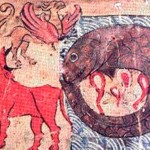
Leviathan the sea-monster, with Behemoth the land-monster and Ziz the air-monster. “And on that day were two monsters parted, a female monster named Leviathan, to dwell in the abysses of the ocean over the fountains of the waters. But the male is named Behemoth, who occupied with his breast a waste wilderness named Duidain.” (1 Enoch 60:7-8)
6:5 “…tossed upon the waves…great terrible tempests…” I had a Ricks College religion teacher that taught the reason the waves were so big was because this chronologically correlated with Genesis 10:25 “…Peleg; for in his days was the earth divided…” His thought was that it was the breaking up of the earth that caused the huge waves. I am sure he was an Elder McConkie/President Joseph Fielding Smith young earth creationist. If one is a young earth creationist, holding to the idea that the earth is only six-thousand years old, and holds that the bible literally offers an infallible calendar of events, then this would put these events around 2247 BC.
6:10 “…and no monster of the sea….” Leviathan is a word that has become synonymous with any large sea creature. It is mentioned six times in the Hebrew Bible: Job 41:1; Isaiah 27:1; Psalm 74:14 being among them.
6:6 This is where the original chapter break use to be (chap. III)
The People Multiply: Ether 6:14-18
There are many LDS scholars and apologists that hold the opinion that the Olmecs could have been the Jaredites. Traditionally, the beginnings Olmec civilization is placed between 1400 and 1200 BCE. By comparison, soon after the tribes of Israel occupied the land of Canaan under Joshua. The rudiments of Mesoamerica’s two major traditions were on the scene by about 3000BCE. Corn farmers then lived in villages and displayed skills in pottery manufacture at a number of locations in south-central Mexico (Dr. John Sorenson, An Ancient American Setting for the Book of Mormon, pg. 110).

San Lorenzo Tenochtitlán Colossal Head 6, a 3 meter high Olmec sculpture with lips and nose said to resemble African facial features.
The People Desire a King: Ether 6:19-27
6:25 “…the people would that his father should constrain him…” How could you “constrain” someone to lead a group of people?
Moroni masks how radically different the Jaredite and Nephite civilizations were by giving us a truncated account of the former…the only two periods of Jaredite history for which he provides thicker, more detailed narratives are those that present the most obvious parallels with the Nephties: the beginning and the end…Moroni attempts to shape the book of Ether into a coherent unity with the history of the Nephites…In a subtle fashion, Moroni brings the two peoples into conjunction by shaping the Jaredites’ story using both parallel narrative elements and distinctive phrasal borrowing from the Nephite account… Moroni highlights the similarities of the Jaredites and Nephite migrations through a series of significant literary parallels. Grant Hardy notes 18 such literary parallels. Here are just a few:
- The brother of Jared is “large” in stature and “highly favored of the Lord,” like Nephi (Ether 1:34; 1 Nephi 2:16; 1:1).
- The people are instructed to “gather together seed of every kind” (Ether 1:41; 1 Nephi 16:11)
- The Lord provides direction for travel (Ether 2:5, 6; 1 Nephi 16:9; 18:5)
- The Lord instructs them to build ships, including design details (Ether 2:16; 1 Nephi 17:8; 18:1, 2).
- They are to be “led to a land of promise…choice above all other lands” (Ether 2:7; 1 Nephi 2:20; 2 Nephi 1:5)
Again and again, it seems that Moroni is deliberately employing language from Nephi’s writings to tell the story of the first generation of the Jaredites
Elder B.H. Roberts said the following:
“It may be asked, what of this parallelism? What does it amount to? If such a question should be asked, the opponent of the Book of Mormon would answer with emphasis – “This of it. It supplies the evidence that the Book of Mormon is the product of one mind, and that, a very limited mind, unconsciously reproducing with only slight variation its vision.” And the answer will be accepted as significant at least, if not conclusive” (B.H. Roberts, Studies of the Book of Mormon, ed. Brigham D. Madsen, pg 259).
Yet the parallels are stronger than Roberts realized, especially those that include clear verbal correspondences, and the literary context is more intriguing. Roberts showed little, if any, awareness of what it means to read Ether as the work of Moroni. Here is a list, identifying key words or phrases that connect the founding eras of the Jaredites and the Nephites, along with an indication of how often these terms show up elsewhere in the Book of Mormon. Here are just a few:
Ether 1:38 “let us be faithful” 1 Nephi 3:16; ;4:1; 7:12 Appears 0 times elsewhere in the Book of Mormon
Ether 1:41 seed “of every kind” 1 Nephi 16:11 Appears 0 times elsewhere in the Book of Mormon
Ether 6:6 “great and terrible temptes(s)” 1 Nephi 18:13 Appears 1 other time in the Book of Mormon
Ether 6:12 “tender mercies” 1 Nephi 8:8 Appears 0 times elsewher in the Book of Mormon
Grant Hardy lists a total of 16 parallel terms.
Some of these phrases might be of particular use when describing a sea voyage to a new land, but many are not. What the lists seems to demonstrate is a close, unique literary connection between the first chapters of Ether and First Nephi. This might be explained by an inadvertent repetition on Joseph Smith’s part, particularly since after the loss of the 116 pages by Martin Harris, Joseph continued his dictation with the books of Mosiah through Moroni before returning to the origins of the Nephites and producing First Nephi through Omni. Consequently, Ether and Fist Nephi were written within a few weeks of each other.
Yet when we reenter the world of the text, other explanations are possible. Mormon describes his discovery of the Small Plates among the records in his possession as a delightful surprise (Words of Mormon 1:3-5), a small bit of consolation in an era of impending destruction, sometime before he handed over the records to his son (vv. 1-2). Given the circumstances, we can assume that Moroni would have carefully studied this new-found scriptural treasure. It is therefore not unexpected that his own narrative would be heavily influenced by Nephi’s writings or that he might make deliberate allusions to the Small Plates. (Hardy, A Reader’s Guide, pg. 228-231).
The Chronicle of Jaredite Kings: Ether 6:28-11:23
This chronicle closely follows Ether’s geneology at Ether 1:26-33, but in reverse order.
The Reign of Orihah: Ether 6:28-7:3a


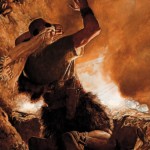
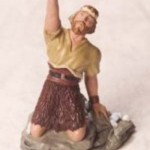
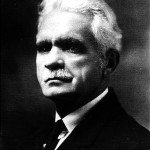



For the windows, I always had in mind the kind that the tall ships used to fire their canons from; they were made out of wood and had a hinge on the top to open or close them, allowing the men to move the canon into the hole when they were fighting.